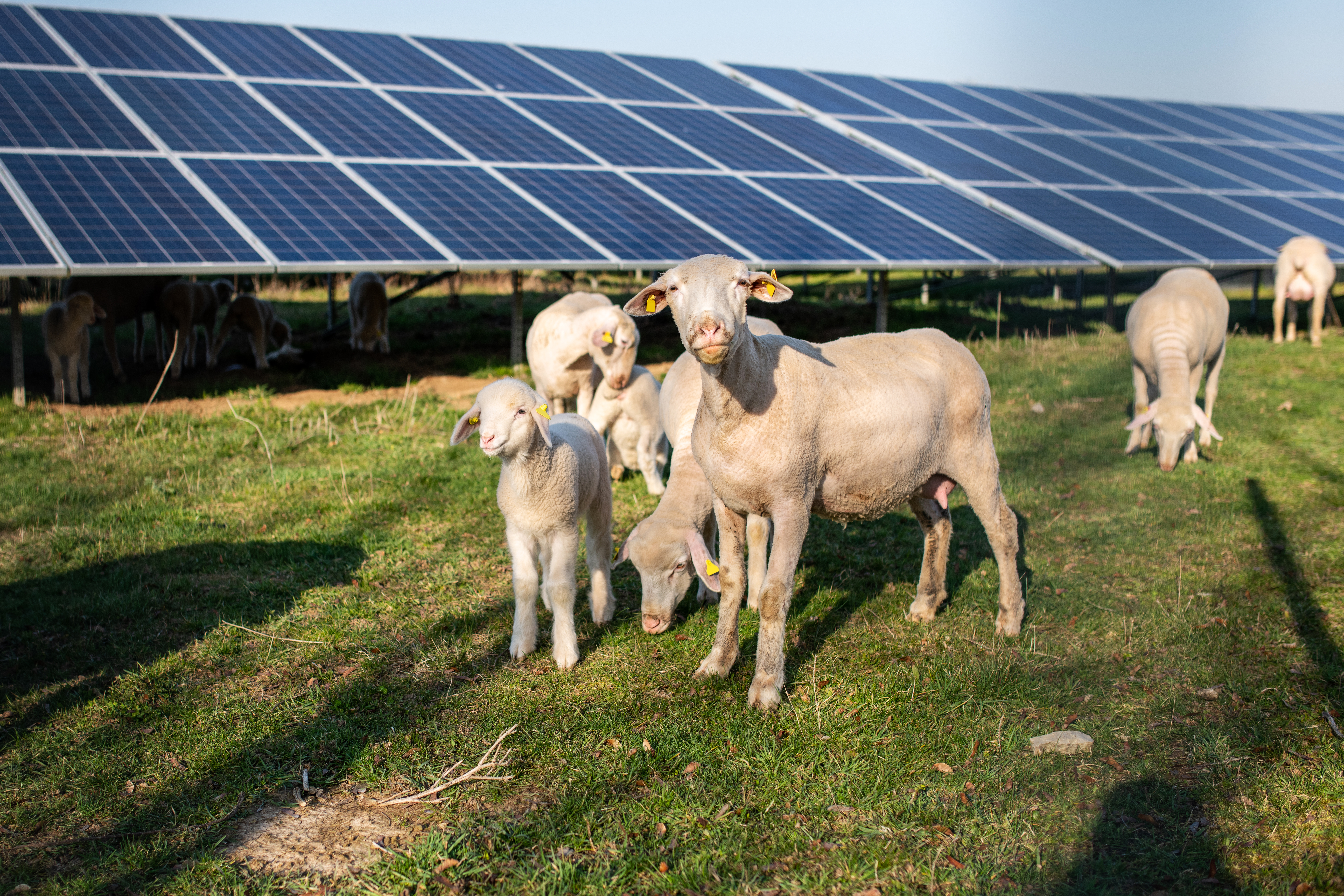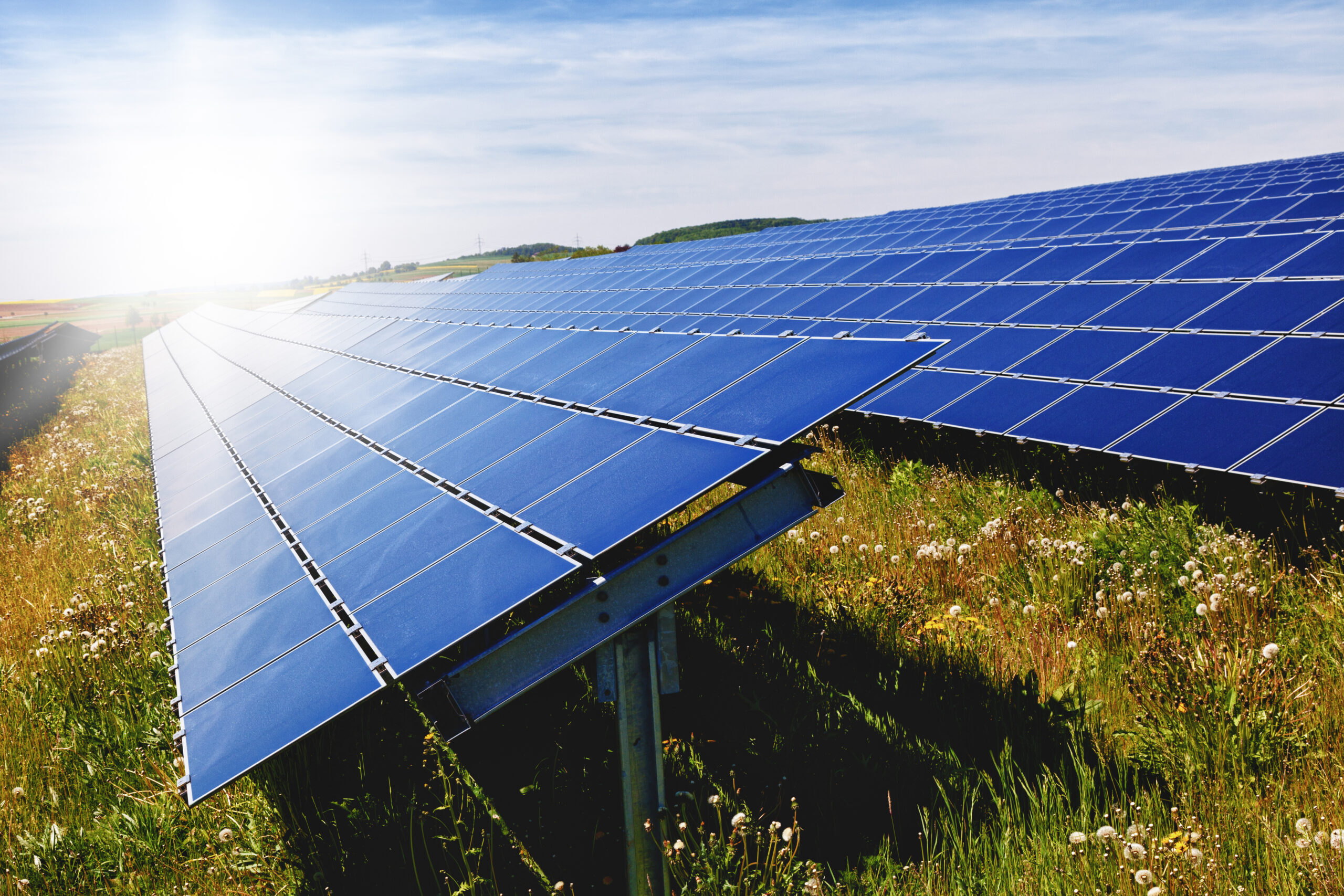
Agrivoltaics: A Smarter Path to Solar Permits and Dual Land Use
May 27, 2025
By: Ethan Jahnke, Director of Renewables, Rockies Region
If there’s one topic that comes up at almost every town hall and commissioners meeting I attend, it’s agrivoltaics. Five years ago, it was barely on the radar—now it’s part of at least half our utility scale solar projects, and it’s only going to become more common.
Why? Because taking land out of agricultural production is a major sticking point for solar development. Communities worry about farmland disappearing, counties want agriculture land to remain productive, and developers need projects to move forward with minimal roadblocks. Agrivoltaics provides a solution that makes solar development more viable, both environmentally and financially.
Why Agrivoltaics May No Longer Be Optional
Conversations around agrivoltaics usually start in a few ways. It can be landowners who want to keep their land in agricultural production while still benefiting from solar development. Other times, we see clients actively seeking agrivoltaic solutions to better manage their portfolios. One client in Northeast Colorado wanted to be seen as a proper community member and a good steward of their property by maintaining agricultural practices in the region while integrating solar.
More recently we have seen the county requiring agrivoltaics —like we saw in Western Colorado, where Delta County commissioners finally approved the Garnet Mesa Solar project when the design included agrivoltaics.
Regardless of how the conversation starts, one thing is clear, including agrivoltaics in solar projects is becoming the norm, not the exception.
The Practical Benefits of Agrivoltaics
Agrivoltaic systems aren’t just about securing permits as they provide tangible financial and environmental benefits, making them a strategic investment for developers and landowners alike.
 Easier Permitting & Community Support
Easier Permitting & Community Support
Solar farms, especially utility scale solar farms, can face resistance when they’re perceived as taking land out of production. Agrivoltaics helps ease that concern by allowing agriculture to continue alongside energy generation. Some counties are even requiring agrivoltaic integration in all new projects—a trend that is growing across the U.S.
 Livestock Grazing & Cost Savings
Livestock Grazing & Cost Savings
One of the most common approaches to agrivoltaics is sheep grazing under solar arrays, and there’s now an entire industry built around it. Operators rent sheep on a rotating basis to manage vegetation, reducing maintenance costs while keeping farmland active. However, sheep cannot be used everywhere, especially within 50 miles of Rocky Mountain bighorn sheep populations due to the risk of disease transfer. In these cases, pollinator habitats and native vegetation offer a great alternative, helping to maintain ecological balance while supporting biodiversity.
 Crop Growth & Pollinator Habitats
Crop Growth & Pollinator Habitats
Solar panels can actually improve growing conditions for certain crops. Shading reduces water evaporation and heat stress, creating a more stable environment for plants that thrive in partial shade. But agrivoltaics isn’t just about livestock and crops—it also includes planting native vegetation and creating pollinator habitats around solar farms. Pollinator-friendly solar farms not only enhance biodiversity, but they also provide essential support for local ecosystems. By integrating wildflowers and native grasses, developers can foster bee and butterfly populations, improving soil health, and increasing nearby crop yields.
Challenges Developers Need to Consider
Agrivoltaics is a promising strategy, but it’s not without challenges.
- Panel Height Costs– If developers want to use farm equipment under solar arrays, they’ll need to significantly raise panel heights, which can add costs.
- Future Operator Decisions – Some solar sites are designed for resale, meaning agrivoltaic features must align with what future operators can maintain.
- Regional Constraints – In certain areas, spacing out panels to accommodate farming operations isn’t always feasible.
These factors all play into whether agrivoltaics makes sense for a particular site, but as permitting requirements evolve, more developers will need to find creative ways to incorporate it.
The Future of Solar Development
Agrivoltaics isn’t just a trend—it’s a fundamental shift in how solar projects are developed. Counties are starting to require agrivoltaic elements, investors are recognizing the financial benefits, and community support grows when solar farms maintain agricultural activity.
The transition won’t be seamless—research, planning, and collaboration are key—but as an industry, we’re moving toward a future where agrivoltaics isn’t just preferred, it’s expected.
 Ethan Jahnke
Ethan Jahnke
Senior Project Manager
Ethan brings over 25 years of expertise in energy project management and regulatory compliance to the table. His extensive experience spans federal, state, and local regulatory permitting and compliance across various industries throughout North America, including Utilities, Renewables, Oil and Gas, Mining, Pipelines, Transportation, Redevelopment, and Telecommunications. With a keen understanding of complex regulatory frameworks like NEPA and NPDES, Ethan has proven instrumental in guiding projects through intricate compliance processes, ensuring adherence to environmental standards and legal requirements.

